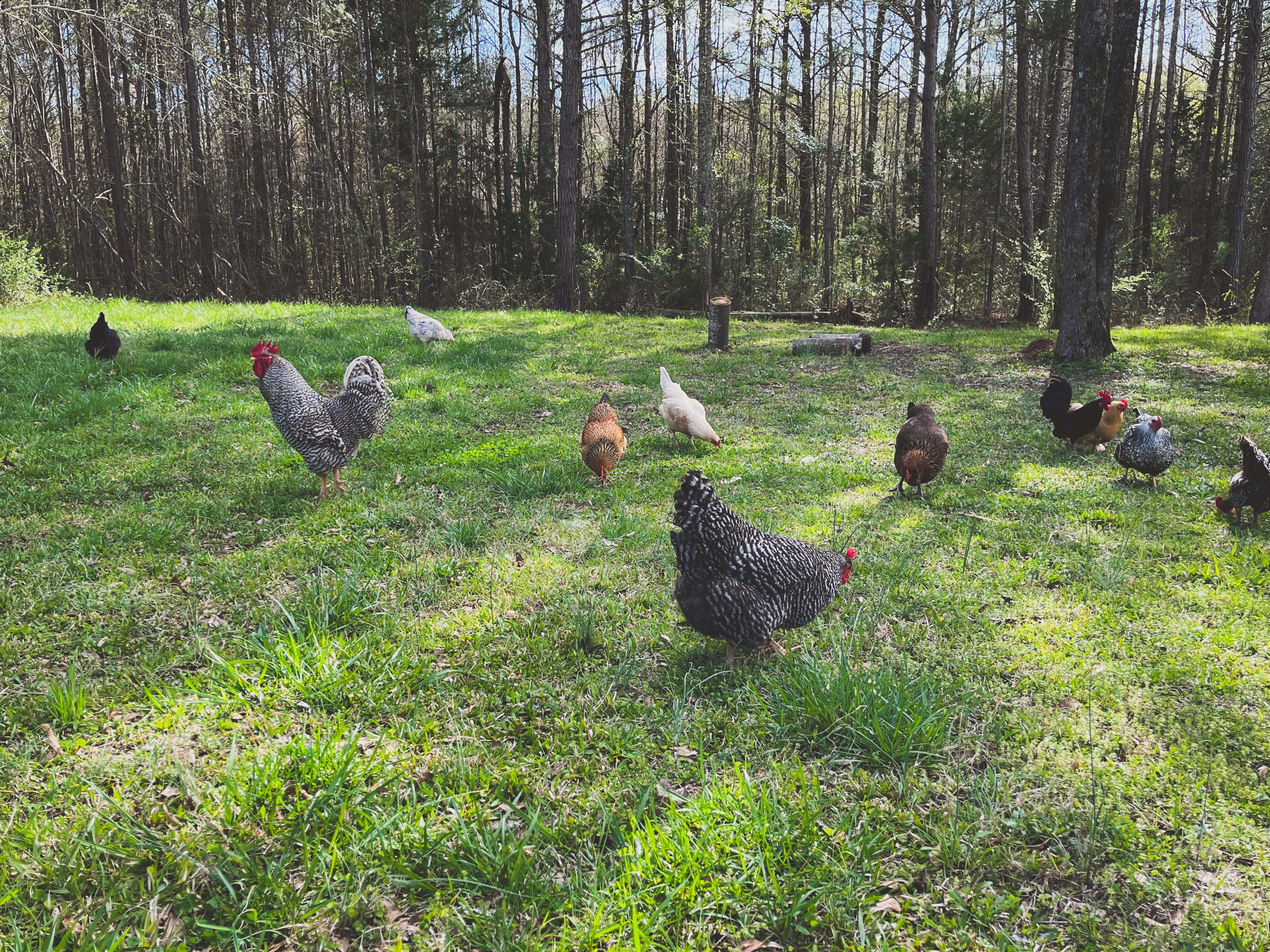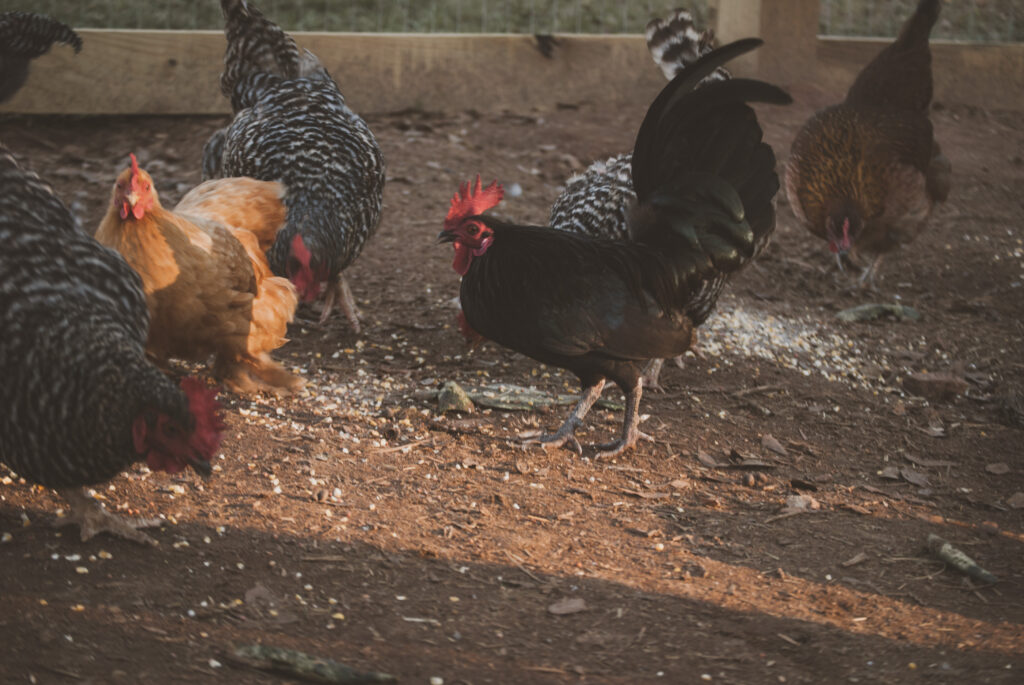Learning how to introduce new chicks to the flock can be tricky. Chickens have a very complicated social network, and a pecking order There are certain steps that need to be taken to ensure everyone gets along. However, with a little time and patience introductions can go smoothly.

Growing Your Flock
Chicken math happens very quickly. You start out with just a few chicks from your local feed store, and before you know it, you’re wanting to add more. The good news is introducing young chickens to your established flock is easier than you might think There are some steps you need to take to ensure everyone gets along.
Tips for Growing Your Flock
- Integrating younger chicks into the flock is easier that adult chickens. They will naturally fall to the bottom of the pecking order initially. An adult chicken might try to challenge the current social system causing more drama.
- Always integrate more than one chick at a time. If multiple chicks are being added, it will help decrease the chances of an individual chick getting picked on.
- On the opposite end of introducing more than one chick at a time, you don’t want to introduce too many new chicks at a time. This can stress the existing flock. 5 to 15 chicks are good numbers to stay within.
- When introducing new chickens to an established flock, take your time and give everyone plenty of space. Confining newly introduced chickens with established ones can lead to someone getting hurt.
- Wait until the new chickens are a similar size to the adult ones. They aren’t as likely to get hurt.
- If you have a broody hen, she’ll do all of the integrating for you. Read more about why I love broody hens.
Step 1: Introducing New Chicks to The Flock
Introducing new chickens to an established flock is done slowly and cautiously. You don’t want to throw everyone in together and hope for the best. Let the new chickens and the flock get to know each other first in a “look but don’t touch” set up. A large dog crate works great for this. A separating fence is good too. You want everyone to see each other for extended periods of time during the day, but to be unable to hurt each other.
Start by putting the new chickens in the crate early in the mornings. Make sure they have plenty of food and water in the crate. Put the crate in the coop or chicken yard with the established flock. Allow everyone to be together during the day, then return the new chickens to a separate area for the night. Repeat this routine for 4-5 days in a row. Chickens will recognized and remember other chickens that they have been introduced to. They will somewhat learn that these new chickens are not a threat. It has been my experience to really take your time on this step. You don’t want everyone to have access to each other too quickly.

Step 2: Mingling
After everyone has met each other while being safely separated for several days in a row, allow the new chicks to mingle with the established ones. This can be done by letting them out in the coop or yard. However, it works even better if they are allowed to free range together. The more space they have with each other the better. I have found that free ranging chickens tend to not even notice when I add new chickens. Keep in mind that there are some bullies in your flock so watch everyone very closely. Little squabbles and pecks are natural and necessary to establish a new pecking order, but there shouldn’t be any blood drawn. I like to do this step while I am working in the yard, or close to home for a weekend. Allow the chicks to be out together during the day for around 3 days, while still separating them at night.
Step 3: Overnight Stays
When you introduce new chicks to the flock, allowing everyone into the coop for overnight stays is the most crucial step. This introduces the new chickens to their home, while letting the established flock members know they are part of the family. You will still be allowing the new chickens and the flock to be out together during the day. Instead of separating them at night, put the new chickens into the dog crate inside the coop at night. The new chickens will recognize the coop as a safe place to sleep and roost, and will return to it every evening. If you are unable to fit a dog crate in your coop, close the new chickens in the coop for 24 hours straight. Make sure they have plenty of food, water, and access to a run. This will also let the new chickens know the coop is their home. I prefer to keep mine separated, but in the same coop overnight. There can still be some squabbling at night over roosting spots.
Step 4: Putting Everyone Together
Allow the new chickens and the rest of the flock to be together but separate at night for at least two nights. If you are keeping your new chicks in the coop and not in a crate, remember to keep them locked in for at least 24 hours so they’ll know where home is. After this, you can let everyone be together. The chickens should recognize each other, and have established a pecking order during their day time visits. I still watch my chickens in the evenings to make sure there aren’t serious squabbles over desired roosting spots. This things usually work themselves out too.

Step 5 Pecking Orders
When it’s time to introduce new chicks to the flock, take into account the sex of the chickens you’re adding. If adding all pullets to an established flock, having a rooster around will help keep the fighting to a minimum. Roosters are naturally at the top of the pecking order and will keep the flock in line. When adding a rooster to an established flock of hens, they should get along as long as the rooster is reproductive age. Adding a younger rooster may mean he gets picked on by the older more dominant hens. Again, always add more than one chicken at a time to keep the bullying to a minimum.
Adding Roosters to an Established Flock with a Rooster
If you are introducing a rooster to a flock with an established rooster, this can be very tricky. Everyone may get along fine, but when the new rooster reaches reproductive age there could be problems. Monitor their behaviors closely to ensure no one gets hurt. Sometimes adding a young rooster to an established flock with an older rooster works out as long as the young one is submissive. It’s very hard to predict how two roosters will behave together. I’ve learned the hard way to be extremely cautious with multiple roosters.
Breaking Down How to Introduce New Chicks to the Flock
- Keep everyone in plain view, but safely separated during the day of the first week. Return the new chickens to a separate area at night.
- Let everyone free-range or be together unseparated in the coop or yard during the day. Monitor their behaviors closely.
- Allow the two groups to continue to be together during the day, then put the new chickens in the coop, but safely separated at night. Leave the new chickens in the coop safety separated for at least 24 hours to establish a new home.
- Allow everyone to be together at all times. Continue to closely monitor their behaviors.
[…] How to Introduce New Chicks to The Flock […]